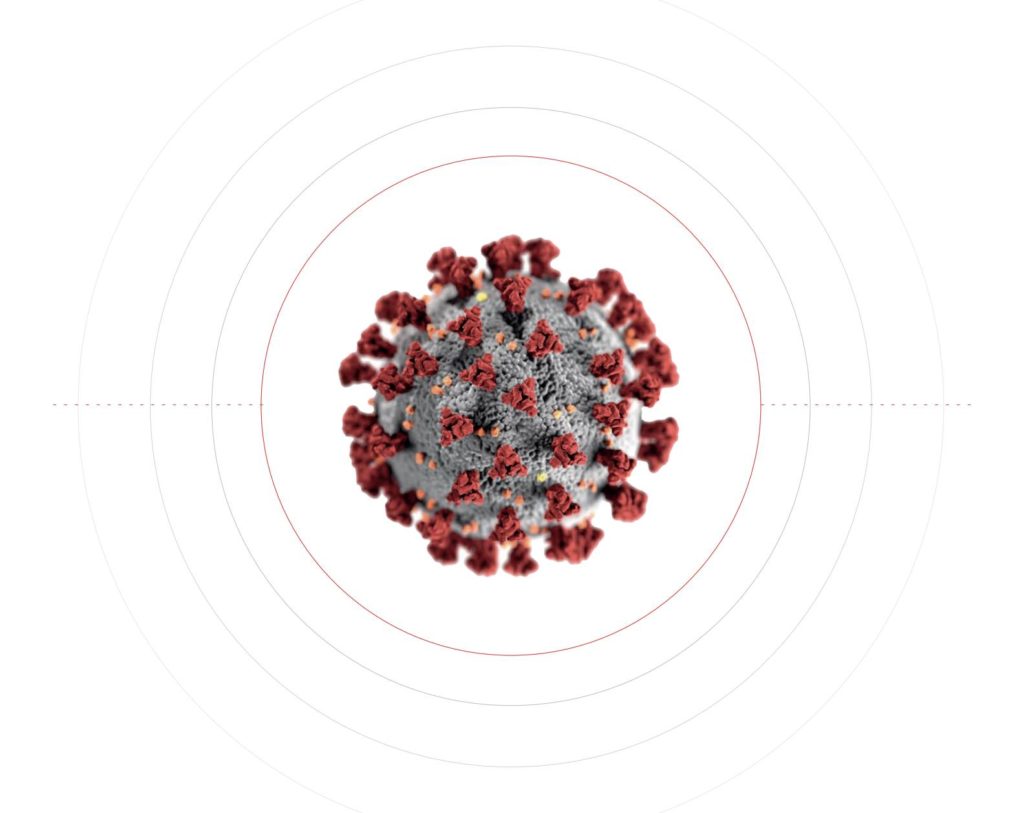
When an intervention has never been tried before, it is particularly important to carefully assess the potential harm it may inflict.
Lockdowns have never previously been used in response to a pandemic. They have significant and serious consequences for health (including mental health), livelihoods and the economy. Around 21,000 excess deaths during the first UK lockdown alone were not COVID-19 deaths.1 These are people who would have lived had there not been a lockdown.
Millions will be impacted by reduced screening and assessment services across health conditions with many premature, avoidable deaths.2,3 Businesses have closed, never to reopen and livelihoods have been lost.4 Whilst the focus continues to stay primarily on COVID-19, the health of our nation is beleaguered by the collateral damage of this approach. In mental health, in elective surgeries cancelled and in the delicate structure of society.
The average age of death for COVID-19 is 82.4, higher than the average age of death from other causes (81.5).5 In the majority of the population COVID-19 is not a death warrant. One of the key lifestyle choices highlighted by BUPA for robbing the population of years of life is smoking. As such the risk of premature death from smoking is greater than that of COVID-19. Whilst we are told to ‘stay at home’ for fear of contracting COVID-19, cigarettes are freely available.6
There are genuine undeniable concerns about overcrowding in UK hospitals during winter peaks. However, this issue is complex and multifactorial. There is a grave danger in conflating causation with correlation. As we receive the international data of countries who did not impose severe mandatory lockdowns, the evidence is mounting that lockdowns cause immeasurable harm whilst not appearing to have a positive effect on reducing mortality.7,8
Viral transmission is a complex issue, affected by host susceptibilities, seasonal changes and many other factors. The full story is far from being fully understood by scientists.9 Indeed there is evidence emerging that, by not allowing it to spread through the less susceptible more quickly, we may inadvertently be increasing the risks to the more vulnerable population as they are not offered protection by the younger population in the shortest time-frame possible.10 There is also concern that lockdowns may in fact be contributing to the viruses mutating into more deadly or transmissible variants, by removing the normal competitive advantage of the more transmissible variants.11
As we did not have all the facts about the disease picture last spring, being cautious was prudent. However, a great deal more is now known and there is the need to revisit some of the earlier assumptions and change direction as a result.
There is a growing concern among many that we may now be committing the error of repeating the same experiment and expecting different results. There is mounting academic evidence that calls into question the efficacy of lockdowns and therefore we must in turn question whether the significant costs outweigh the purported benefits.12,13 According to recent Government estimates, 220,000 will be the true death toll of the pandemic, with nearly half lost to non-Covid causes such as cancelled operations.14
Lockdowns work on the assumption that healthy people can spread disease. Before last year, this concept would have seemed unlikely to anyone with an understanding of the spread of respiratory viruses. The evidence for the existence of asymptomatic spread is very thin.15,16,17 We need to find the humility and courage to re-evaluate this assertion, even if this means admitting that mistakes may have been made. We might also then be more able to critically question the logic of continued widespread lockdowns.
Physical contact is essential for human beings. We are social animals. To deny people this for long and undefined periods causes enormous psychological and physical harm which we are clearly witnessing throughout the nation, in every corner of society.18,19 This is alongside the economic and societal implications, not to mention the long-term effects of lost educational years on our young people.20
What needs to be done?
There is an urgent need for a full risk-assessment of lockdowns. This should include:
● Examination of the relationship between lockdowns and mortality
● Assessment of whether lockdowns reduce NHS pressure
● Economic costs
● Mental health implications
● The impact on children
● The impact on the elderly
● Reduced access to healthcare, increased burden of disease with increasing waits for elective surgery and screening and future mortality implications
● Potential delay in achieving natural immunity
● Disruption to communities
● Impact on constitutional and democratic rights
What can we agree on?
The COVID-19 crisis must have been incredibly stressful for those making policy decisions. We must open our minds to the possibility that some errors in judgement may have understandably occurred. The time has come to carefully re-examine the basic assumptions on which these current policies rest. The ongoing cost to our society is too great not to.
When an intervention has never been tried before, it is particularly important to carefully assess the potential harm it may inflict. Looking closely at the mortality data in comparison to the timing of lockdowns and also in comparison to other countries, we start to observe that there is little robust evidence that they have had a significant impact on UK mortality. This is consistent with the global academic literature on the subject so far.21
The mortality rates per million population seem to be entirely determined by the demographics of populations, such as age and comorbidities,22,23 in combination with geographical differences such as climate24 and the capacity of national healthcare systems.25
Notions of ‘Zero Covid’ are just not realistic. We coexist with many respiratory viruses and we will have to accept COVID-19 into that list. We should be heartened by the incredibly high survival rate (>99%)26 and some very encouraging new treatment options coming to the fore, which have a proven safety record and seem to be highly effective (e.g. Ivermectin27 and inhaled steroids28).
As COVID-19 becomes endemic in the population, a more pragmatic approach is needed. The virus is just one of multiple risks we encounter in our daily lives and we must together try to move towards a more balanced assessment of the disease in the context of our lives as a whole.
There is an urgent need for a clear and final exit strategy and the restoration of the normal democratic processes that are so fundamental to our national identity here in the United Kingdom.
Endnotes
1. An Improved Measure of Deaths Due to COVID-19 in England and Wales
2. Millions in UK miss cancer screenings, tests and treatments due to COVID-19
3. The impact of the COVID-19 pandemic on cancer deaths due to delays in diagnosis in England, UK: a national, population-based, modelling study
4. List of shops that have collapsed into administration in 2020 as UK lockdown hits high street
5. Average age of coronavirus fatalities is 82
6. Effects of smoking: Expert reviewer, Angana Nankani, Bupa Clinics GP
7. Replying to Christopher Snowdon – Again!
8. Lockdowns Do Not Control the Coronavirus: The Evidence
9. Environmental factors affecting the transmission of respiratory viruses
10. Effects of non-pharmaceutical interventions on COVID-19: A Tale of Three Models
11. Stresses and strains : the evolution of Covid is not random
12. Effects of non-pharmaceutical interventions on COVID-19: A Tale of Three Models
13. Lockdowns Do Not Control the Coronavirus: The Evidence
14. Direct and Indirect Impacts of COVID-19 on Excess Deaths and Morbidity: November 2020 Update
15. Has the Evidence of Asymptomatic Spread of COVID-19 been Significantly Overstated?
16. Has the Evidence of Asymptomatic Spread of COVID-19 been Significantly Overstated?
17. In Report Affirming Nearly No Transmission In Schools, CDC Slips In Shocking Data About Asymptomatic Spread
18. Effects of isolation and confinement on humans-implications for manned space explorations
19. Social Relationships and Health : The Toxic Effects of Perceived Social Isolation
20. The Causal Effects of Education on Health Outcomes in the UK Biobank
21. Lockdowns Do Not Control the Coronavirus: The Evidence
22. Predictors of mortality in patients with COVID-19–a systematic review
23. COVID-19 Global Mortality : Comparing Actual and Modelled Patterns in Space and Time Using an Infection Fatality Rate (IFR) Model
24. Climate and COVID-19 pandemic: effect of heat and humidity on the incidence and mortality in world’s top ten hottest and top ten coldest countries
25. A Closer Look Into Global Hospital Beds Capacity and Resource Shortages During the COVID-19 Pandemic
26. Infection fatality rate of COVID-19 inferred from seroprevalence data
27. Ivermectin reduces the risk of death from COVID-19 -a rapid review and meta-analysis in support of the recommendation of the Front Line COVID-19 Critical Care Alliance
28. Inhaled steroids to be tested as a possible treatment for COVID-19 as part of PRINCIPLE trial

